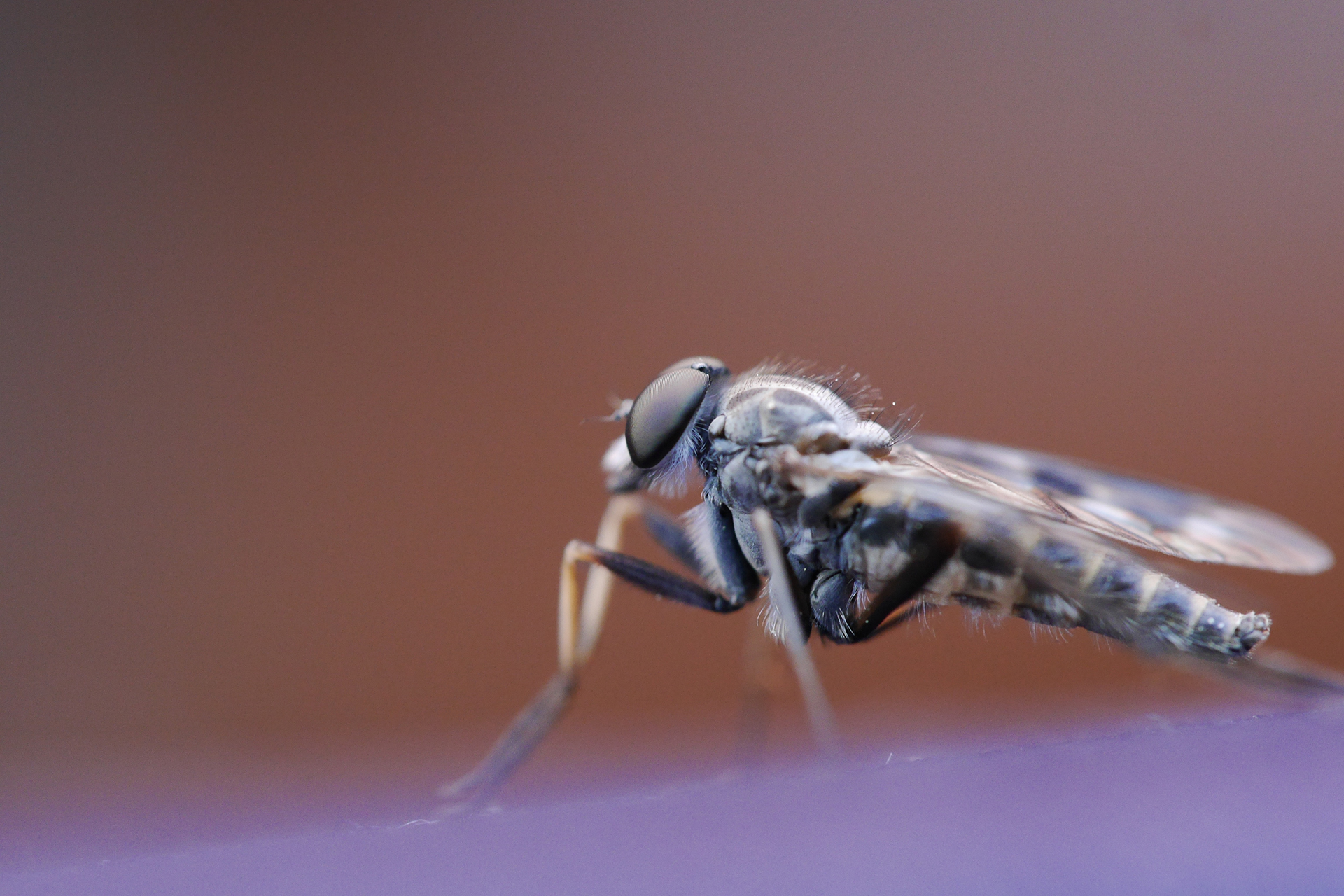The Fly You Shouldn’t Swat

An unfortunate fact of conservation: the cute and charismatic animals tend to get all the attention. All too often, incredible animals go completely unnoticed or even dismissed simply due to the fact that they’re unappealing to look at.
A great many victims of this double standard are insects. Everyone knows butterflies are pretty, bees pollinate crops, and dragonflies eat mosquitoes, but the rest of the 900,000 species of insects are usually considered ugly, scary, or bothersome. They are often killed indiscriminately. Sadly, many beneficial insects are unfairly lumped in with those we consider pests. With world insect populations on the decline, these animals need all the help and respect they can get.
I’d like to shed some light on one of our most misunderstood local insects: the robber fly. Being the biggest, hairiest flies in town, many people consider them about as “ugly” as insects get. If you’re the type of person who swats flies in your house, you’ve probably swatted more than a few robber flies. Much like dragonflies, robber flies are one of the most efficient aerial predators in the insect world, and very beneficial animals to have around.
Robber flies are opportunistic predators, meaning what they hunt mainly depends on what they can find. They’ll go after nearly any flying insect, including wasps, flies, bees, grasshoppers, moths, dragonflies, and occasionally other robber flies. They’re even known to take down prey much larger than themselves, so nearly any insect is potentially on the menu for a large robber fly.
To begin their hunt, they perch on a piece of vegetation waiting for a prospective meal to fly by. Once one is spotted, they spring up and intercept it by flying towards it while maintaining a constant angle to their target. In other words, they aim to where the prey will be rather than simply following it from behind. This is considered to be one of the most efficient ways to chase a target. Once caught, the prey is injected with venom from the robber fly’s beak-like mouthparts which quickly digest its insides to ready it for consumption.
Robber flies are sometimes known as assassin flies. Rather than simply being “assassins” of prey, they’ve earned this nickname through one of their other abilities: mimicry. Many species of robber flies have bodies that imitate those of bees and wasps. While they retain the key features that make them robber flies, their disguises can be good enough to fool most people.
A potential benefit they gain from this illusion is to trick predators. A robber fly mimicking a bee might be able to convince a would-be predator that it’s a real bee with a real stinger, and discourage them from attacking. Another benefit of mimicry is how it can assist their hunting strategy. Bumblebees are not predators, so wearing a bumblebee disguise makes a robber fly “a wolf in sheep’s clothing.” These disguised flies can sit in plain view of their prey without arousing suspicion.
While predatory insects, like robber flies, do hunt insects we consider beneficial, they’re also vital in the control of insects we think of as pests. Biting flies at the beach, house flies in your home, and hornets in your garden are all on the menu for this incredible insect. They may not be as attractive other insect predators, like dragonflies, but their role near the top of the insect food chain is just as important.
Miles Todaro is an environmental educator at the South Fork Natural History Museum and a graduate of Stony Brook University.



